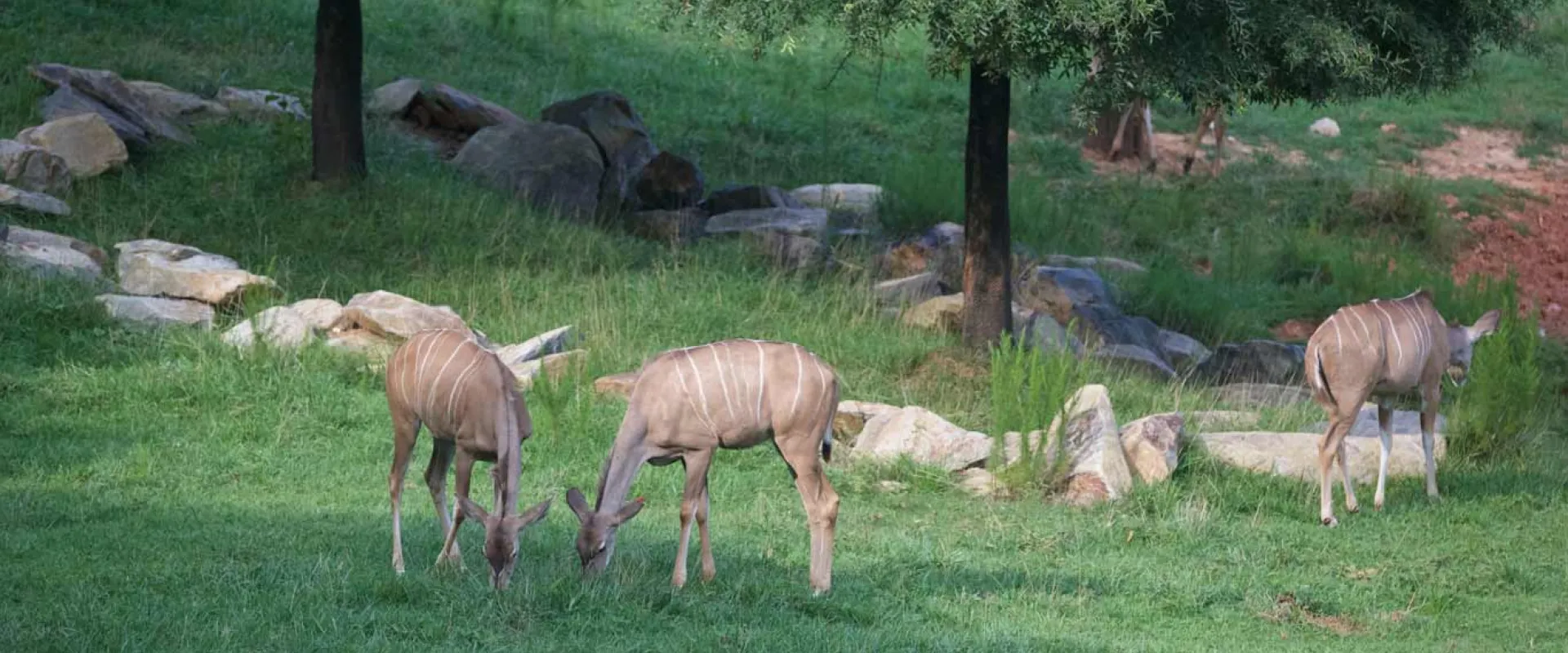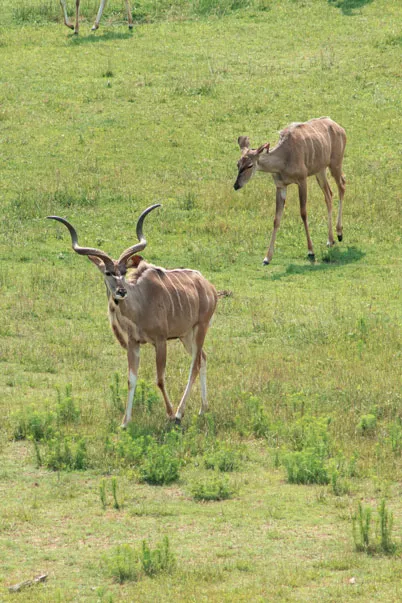About:
Did you know that the spiraling horns of male greater kudus may reach six feet in length? Learn more about greater kudus.
Care & Wellness:
Managing animals on a large, 40-acre habitat can be difficult when it comes to getting a close look at each animal daily. Training allows the Watani Grasslands Reserve's keepers to approach the greater kudu for visual inspections. They also hand feed the kudu, targeting individuals for oral medication as needed.
Behavior:
- Herds are made of six to 10 adult females and their offspring; males live alone or in small bachelor groups.
- Fights between males are rare and dominance is usually established through posturing and display.
- Calves are born away from the herd and are kept hidden for up to five weeks, much longer than most other antelopes.
Endangered Status
- Extinct in Wild (EW)
- Critically Endangered (CR)
- Endangered (EN)
- Vulnerable (VU)
- Near Threatened (NT)
- Least Concern (LC)
- Not Evaluated (NE)





